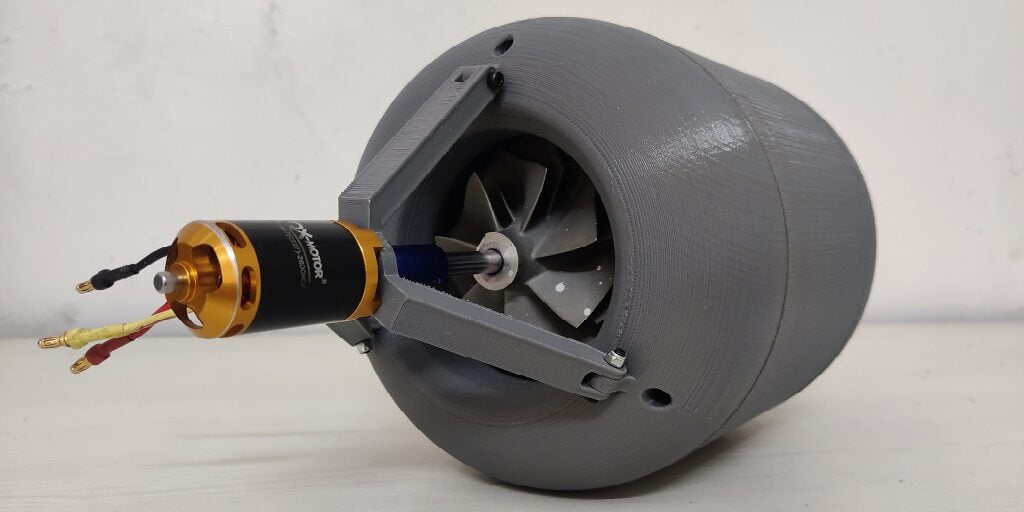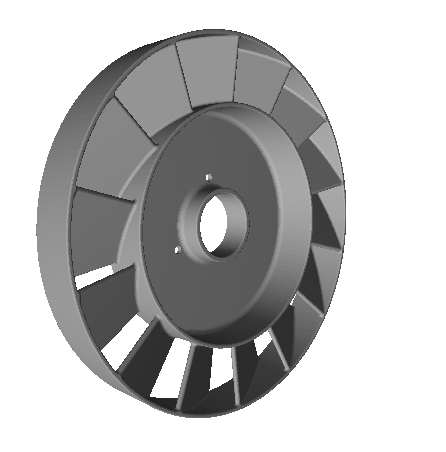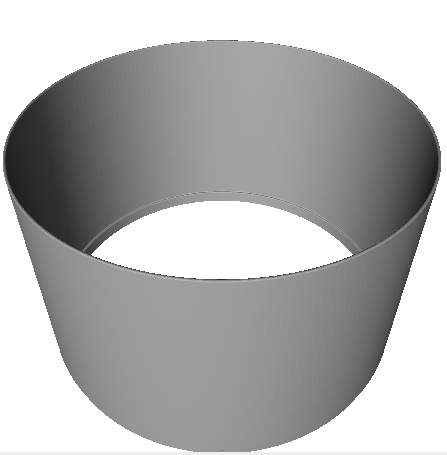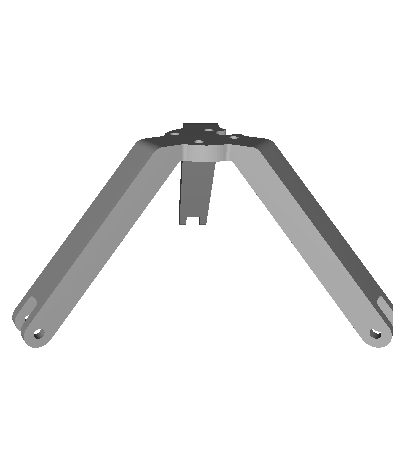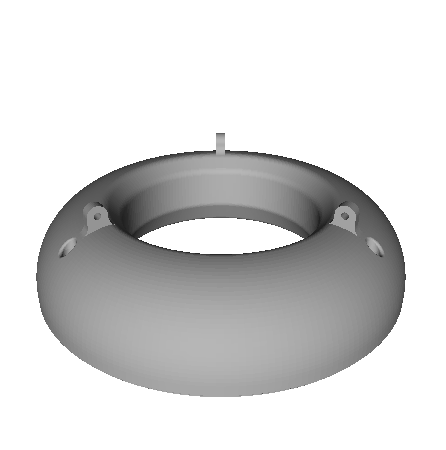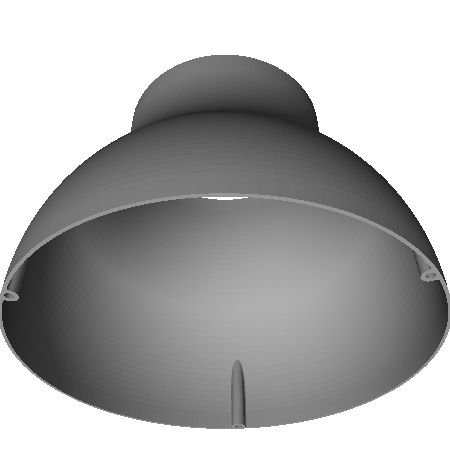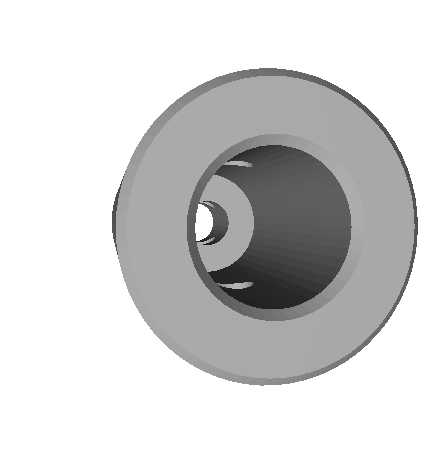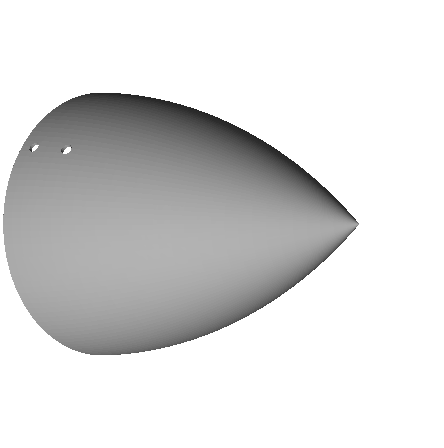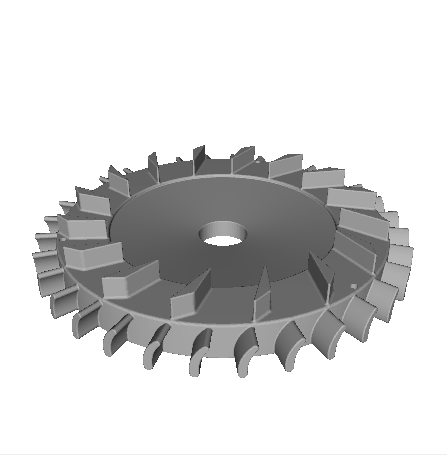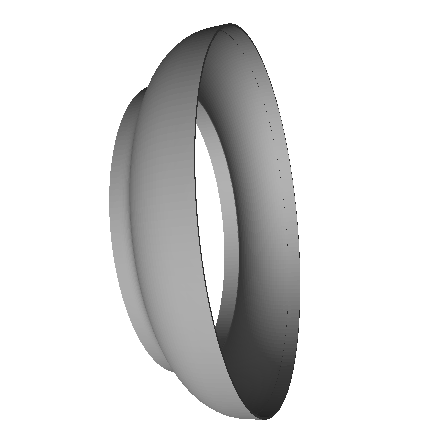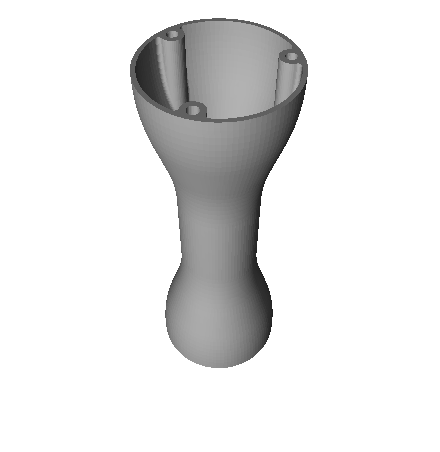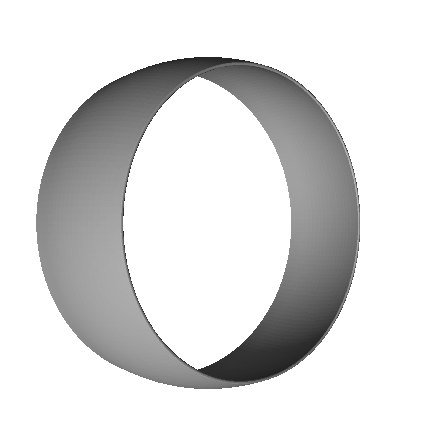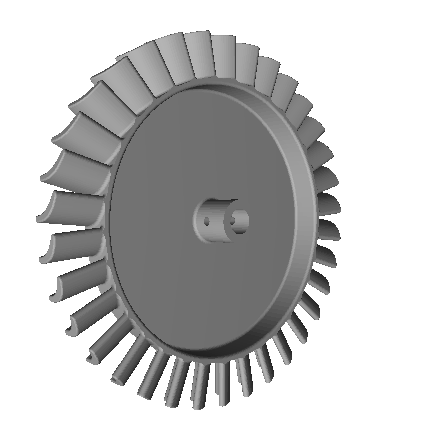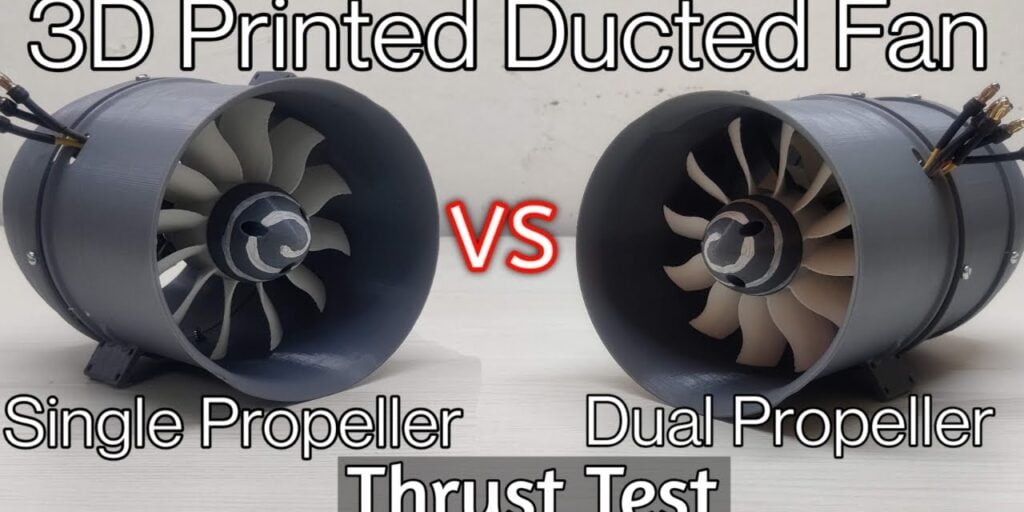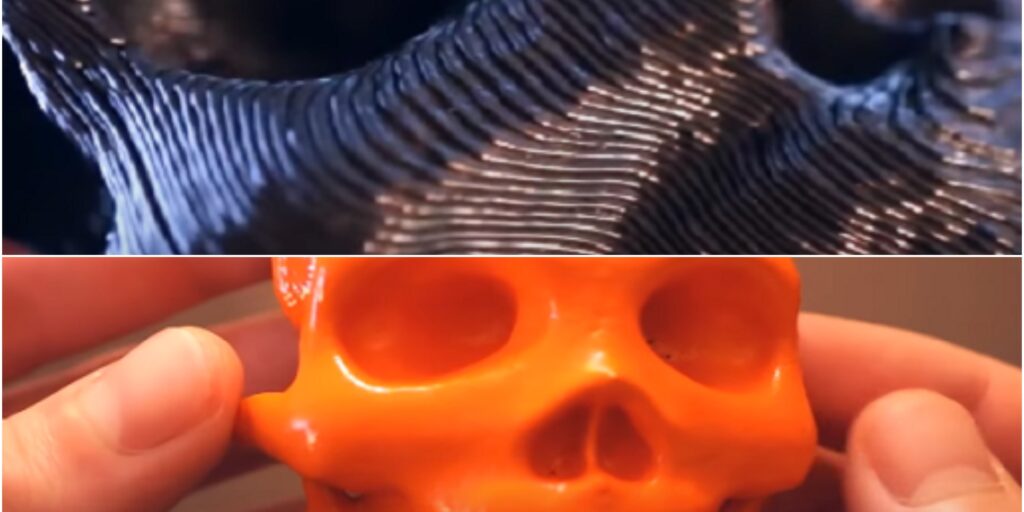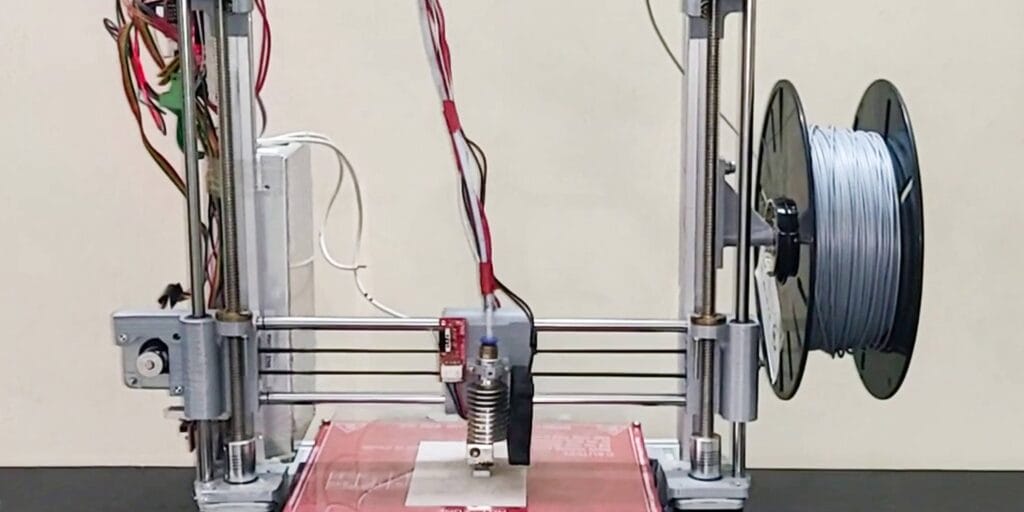This is 3d Printed Electric Mini TurboJet Engine all parts are 3d printed except the shaft and impeller. Our electric Mini Turbojet Engine is similar to the real turbojet engine, the only difference is that it is 3D printed and small in size.
Another major change is that we are going to study airflow patterns. Thus, we are going to run it through electricity. Although our mini turbojet engine is being electrically powered and quite small in size it produces a decent amount of thrust.
Common questions:-
Which jet engine technology is used for space propulsion?
Ion Engine Technology is used for rocket engine for space propulsions.
Can we 3D print a mini turbojet engine?
Yes, you can but it will not produce same thrust. In fact there is a article on 3D Printable DIY Mini Turbojet Engine.
All parts are designed in CATIA and are provided to you in finished STL files. You can easily download the files from our product page or through the link given below.
3D Printable Electric Mini Turbojet Engine
Note: Although STL files are provided to you free, they will have our trademark engraved on them. If you want the trademark to be removed from your Mini Turbojet Engine contact us through email.
Our 3D printable Mini Turbojet Engine has been divided into below-mentioned 12 parts. This is done to ease the 3D printing process. All the parts are easily printable on a home made 3D printer of size 220x220x250(mm).
- Motor mount (Print Volume: 22878.00 mm³)
- Coupling (4136.00 mm³)
- Center Rod (14086.04 mm³)
- Front Shell (531073.00 mm³)
- Compressor (254651.09 mm³)
- Center connector (31117.61 mm³)
- Stator (47143.00 mm³)
- Turbine (39732.00 mm³)
- Curve (51958.00 mm³)
- Center Shell (70161.00 mm³)
- Back Shell (24923.37 mm³)
- Cone (15047.00 mm³)
All Parts are printed by using PLA at 220 degree Celsius at 60mm/s on Ender 3 using Cura Slicer .

Stator 
Center Shell 
Motor Mount 
Front Shell 
Curve 
Coupler 
Cone 
Compressor 
Center 
Center Rod 
Back Shell 
Turbine
Difference Between Electric Jet Engine and Internal Combustion Jet Engine

Internal combustion Jet Engine have five major parts .
- Air Intake Impeller
- Compressor
- Fuel Combustion Chamber
- Turbine
- Nozzle
In an Internal combustion Jet Engines, Impeller rotates by a Motor which is connected through an impeller shaft by a clutch. Impeller Start sucks air and forwards it toward the compressor.
In compressor Series of Turbine in (descending order of size) pressurized the air and it goes toward the fuel combustion chamber. Here air mixes with fuel and sparks plug ignite the air-rich fuel.
So due to the burning of fuel, the air is energized thus, the exhaust goes towards the back of the engine. Because the compressor creates high pressure so exhaust can only flow towards the back of the engine. Here series of the turbine in (Ascending order of size) start rotating with extra force due to the burning of fuel.
Turbine and Air Intake Impeller have same rotating shaft so an increase in rotation of exhaust turbine increases the rotation of Impeller. Thus this cycle starts continuously at a particular RPM. After reaching that RPM(Every design of jet engine has a different RPM to disconnect the Motor) Electric Motor Disconnect clutch or use for as a power generator for charging the battery of electrical use of the plane.
Also, we cannot add fuel at the start of the engine we need 14% of RPM to inject fuel into the Engine. If the Electric starter of the engine is not working so airplane use another engine compressed air or uses an external source of compressed air.
At the End of engine Exhaust speed also control by control Nozzle Mouth size .
Electric Turbojet Engine
The electric jet engines did not have fuel to continue the cycle that’s why electric jet engines have completely different designs. It has an internal motor which is responsible for the rotation of the turbine.
Currently, there are many hypothetical designs and some proven ways to achieve the same continuous cycle as conventional turbojet engines. As current jet engines use a continuous vacuum instead of the fuel combustion chamber or use a different design of turbine for higher efficiency.
Another option is ion engine technology (which is used in space for propulsion) current ion engine has a very minimum amount of thrust like in Ounce. But Technology changes with time due to hardworking of people.
Correct Orientation of Part While Printing
Part orientation affects the surface finish and strength. In the FDM process part printed in XY direction is stronger than print in Z-direction because, in XY direction printed part, force is parallel to multiple layers so the print part can stand more time in stress.
While in Z direction printed part force is, in the same direction of layers due to direction of force is the same direction of layers the printed part will start peeling off.

Different material for More Power
The current version is printed using PLA, it also works good but If Required more power so material can be changed to ( ABS, Carbon Fiber, Polycarbonate or PEEK, PEKK, ULTEM ). PEEK, PEKK, ULTEM has very high mechanical and Thermal Resistance and also light in weight. Hybrid Material Filament is also useful due to material properties changes on Mixed Materials.
Parts Dimensions and Print Volume for Mini Turbojet Engine.
1. Back Shell
- Width: 135.39 mm
- Depth: 135.39 mm
- Height: 50.00 mm
- Total Printing Volume: 24923.37 mm³
2. Center Rod
- Width: 40.00 mm
- Depth: 110.00 mm
- Height: 40.00 mm
- Total Printing Volume: 14086.04 mm³
3. Turbine
- Width: 17.00 mm
- Depth: 124.00 mm
- Height: 124.00 mm
- Total Printing Volume: 39732.00 mm³
4. Center Connector
- Width: 173.18 mm
- Depth: 173.18 mm
- Height: 41.65 mm
- Total Printing Volume: 31117.61 mm³
5. Compressor
- Width: 170.00 mm
- Depth: 24.00 mm
- Height: 170.00 mm
- Total Printing Volume: 254651.09 mm³
6. Cone
- Width: 170.00 mm
- Depth: 24.00 mm
- Height: 170.00 mm
- Total Printing Volume: 15047.00 mm³
7. Coupling
- Width: 16.00 mm
- Depth: 16.00 mm
- Height: 27.00 mm
- Total Printing Volume: 4136.00 mm³
8. Curve
- Width: 149.00 mm
- Depth: 110.00 mm
- Height: 149.00 mm
- Total Printing Volume: 51958.00 mm³
9. Front Shell
- Width: 173.00 mm
- Depth: 50.00 mm
- Height: 173.00 mm
- Total Printing Volume: 531073.00 mm³
10. Motor Mount
- Width: 117.00 mm
- Depth: 54.00 mm
- Height: 101.00 mm
- Total Printing Volume: 22878.00 mm³
11. Center Shell
- Width: 173.00 mm
- Depth: 107.00 mm
- Height: 173.00 mm
- Total Printing Volume: 70161.00 mm³
12. Stator
- Width: 132.00 mm
- Depth: 132.00 mm
- Height: 18.00 mm
- Total Printing Volume: 47143.00 mm³
To understand the project better you can watch our You Tube video. Also, you can follow us on You Tube and subscribe our Newsletter to stay updated with our new projects and products.
Future Upgrade in Project
Create High Rpm Motor And also Redesign Internal assembly for Electric Mode. Add different kinds of Patterns on turbines to increase aerodynamics. Current Motor in 2700kv but for Electric Jet Engine Needed to Design Different Kind of Motor also lightweight Material for Construction of Motor.
Another Upgrade is also to create whole Metal Construction for Internal Combustion Mode. Use 3D printed die for shaping sheet Metal on correct angel. Also, create a Turbine from Sheet metal.
We hope that you liked our post on “Mini Turbojet Engine: The Best 3D Printable Electric”, so please share it with your enthusiastic friends. If you want to ask something please write in the comment box below. Thank You!



